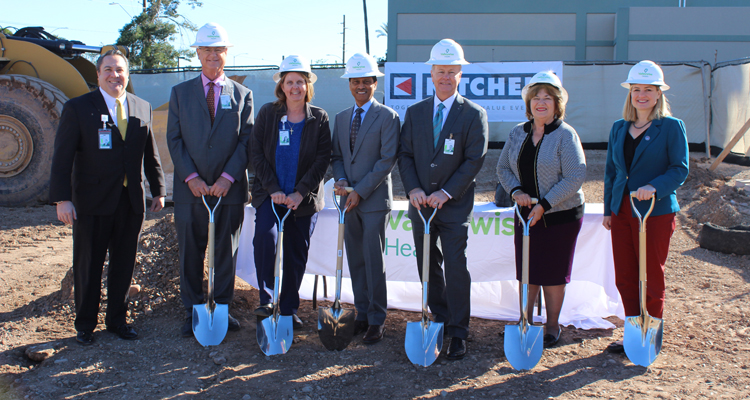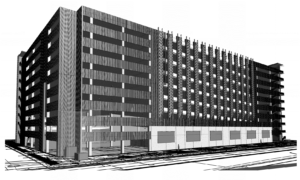A new chapter in the 140-year history of the county’s public health safety net system began as Valleywise Health held a ceremonial groundbreaking for its new medical center at the Roosevelt campus. Built by Kitchell and designed by the Cuningham Group and EYP Health, the state-of-the-art medical center will be constructed adjacent to the current medical center and will continue to serve the healthcare needs of the community during construction.
The new hospital tower, located at 2601 E. Roosevelt Street in Phoenix, will be approximately 673,000 square feet, 10 stories tall and will feature the same services for which the health care system has come to be known.
Funding for the new medical center came as a result of the resounding response of voters approving Proposition 480, which provided Valleywise Health (formerly Maricopa Integrated Health System) more than $900 million to transform the Valley’s public teaching hospital and safety net system of care. Beyond the world-class healthcare services Valleywise provides to the community, it is also the state’s only public teaching hospital. This new facility will only further the ability for future physicians and nurses to get the training they need through state-of-the-art devices and upgraded amenities.
“At the core of all we do, we keep the patient, their care and experience top of mind,” said Steve Purves, CEO at Valleywise Health. “In building this new medical center, we are honoring the request of our community members and are so proud to take this monumental leap to serve the healthcare needs of those who need it most and thankful to all those who made this possible.”
See full article at this link.

From left: Maricopa County Special Health Care District Board of Directors: Chairman Mark Dewane; J. Woodfin Thomas, director, District 4; Mary Harden, director, District 1; and District Medical Group President and CEO Kote Chundu; Steve Purves, president and CEO, Valleywise Health; Mary Rose Wilcox, vice chairman, Maricopa County Special Health Care District; and Phoenix Mayor Kate Gallego break ground on the 673,000-square-foot Valleywise Health Medical Center in Phoenix.
